Abstract
1. The effects of arterial hypoxia on muscle blood flow were examined in normal unanaesthetized rabbits in relation to simultaneously determined changes in cardiac output, arterial pressure and heart rate. Muscle blood flow was estimated from the difference between total limb flow (local thermodilution) and the estimated skin flow (using a calibrated heat conductivity method). The role of the arterial chemoreceptors and baro-receptors in the control of muscle blood flow was examined and the nature of the sympathetic efferent discharge analysed.
2. In mild hypoxia (PO2 > 35 mm Hg) in the rabbit, muscle blood flow did not change, although cardiac output increased. During moderate hypoxia (PO2 30-35 mm Hg) there was initial vasoconstriction in muscle, followed by a return to control values paralleling the changes in cardiac output. In severe arterial hypoxia (PO2 < 30 mm Hg) the initial vasoconstriction was less marked, and during the `steady state' there was a large vasodilatation and increase in muscle blood flow, at a time when the cardiac output was not elevated.
3. The early vasoconstriction in arterial hypoxia is mediated mainly through sympathetic vasoconstrictor nerves as a result of strong arterial chemoreceptor stimulation.
4. Increased secretion of adrenaline is an important factor in restoring muscle blood flow to control values during moderate arterial hypoxia, and in elevating the muscle blood flow above these values in severe hypoxia. The peripheral dilator (β-) effects of adrenaline oppose the peripheral constrictor (α-) effects resulting from increased activation of sympathetic constrictor nerves during arterial hypoxia.
Full text
PDF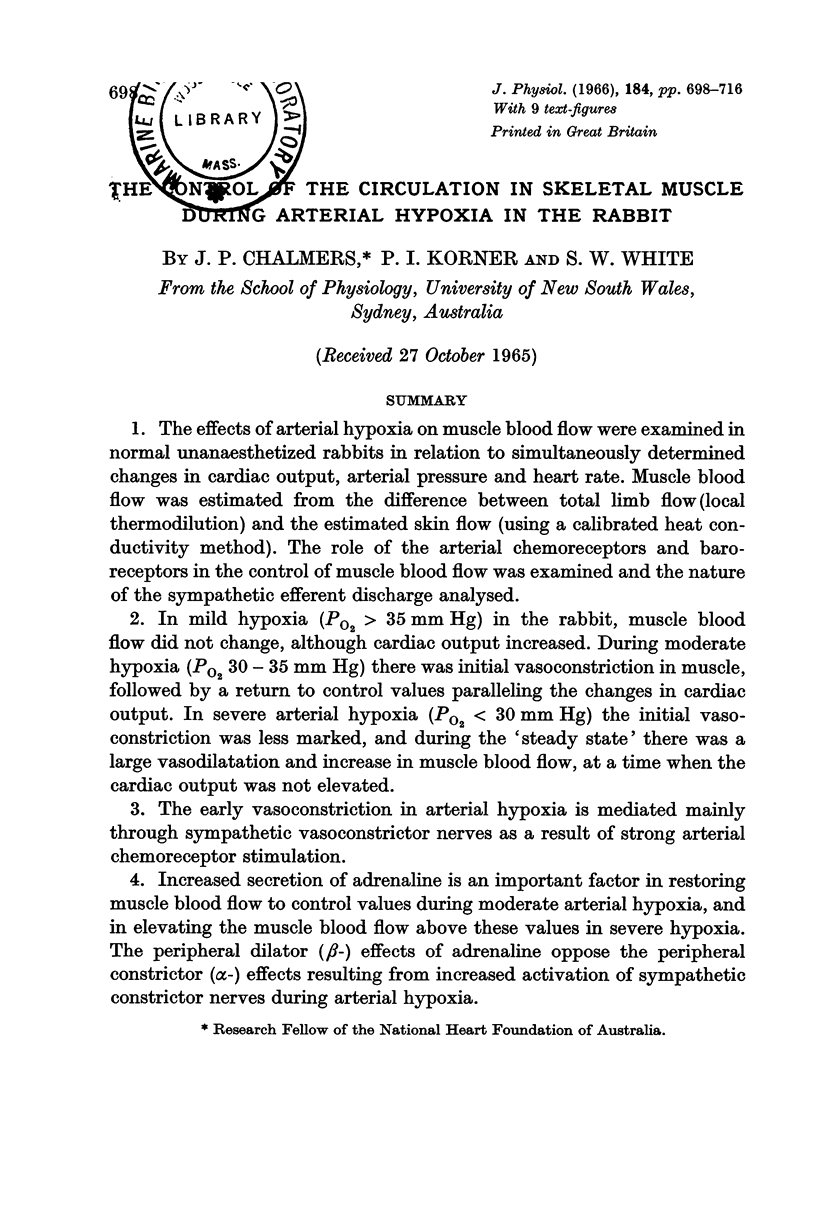
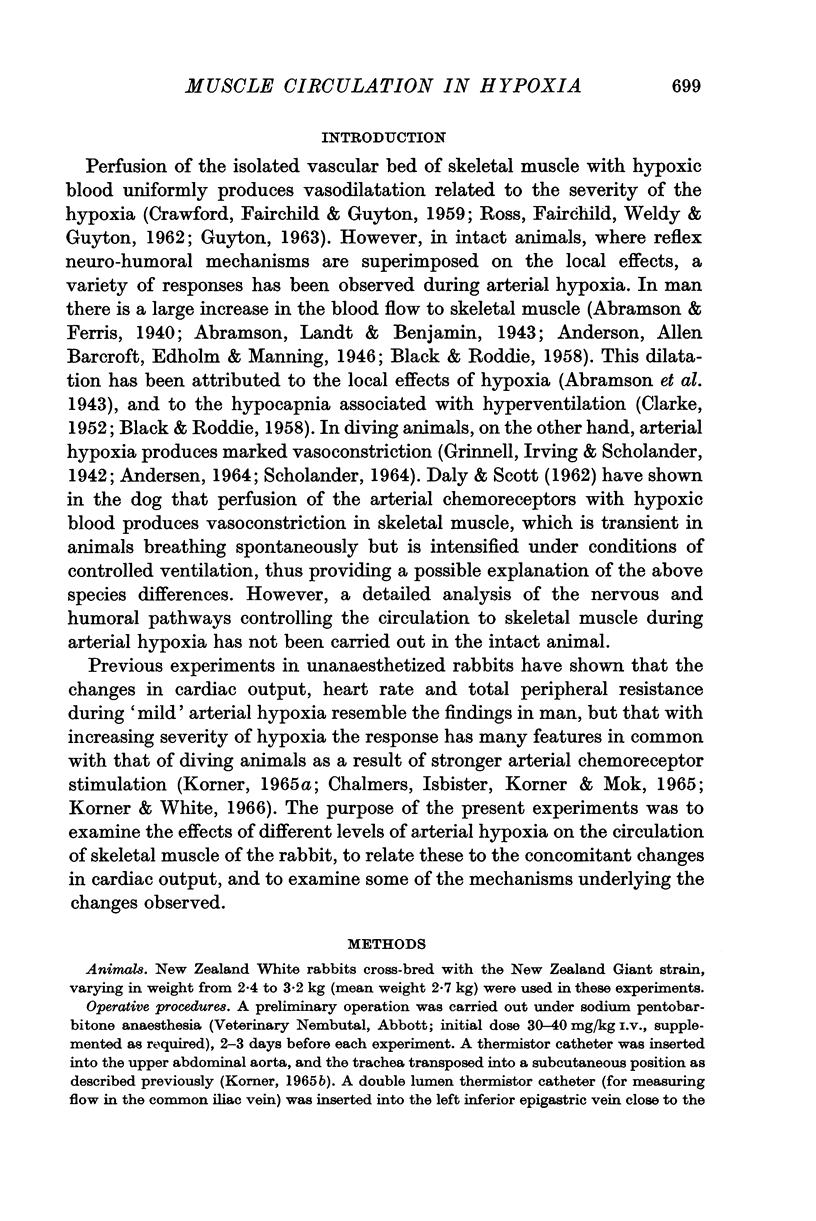
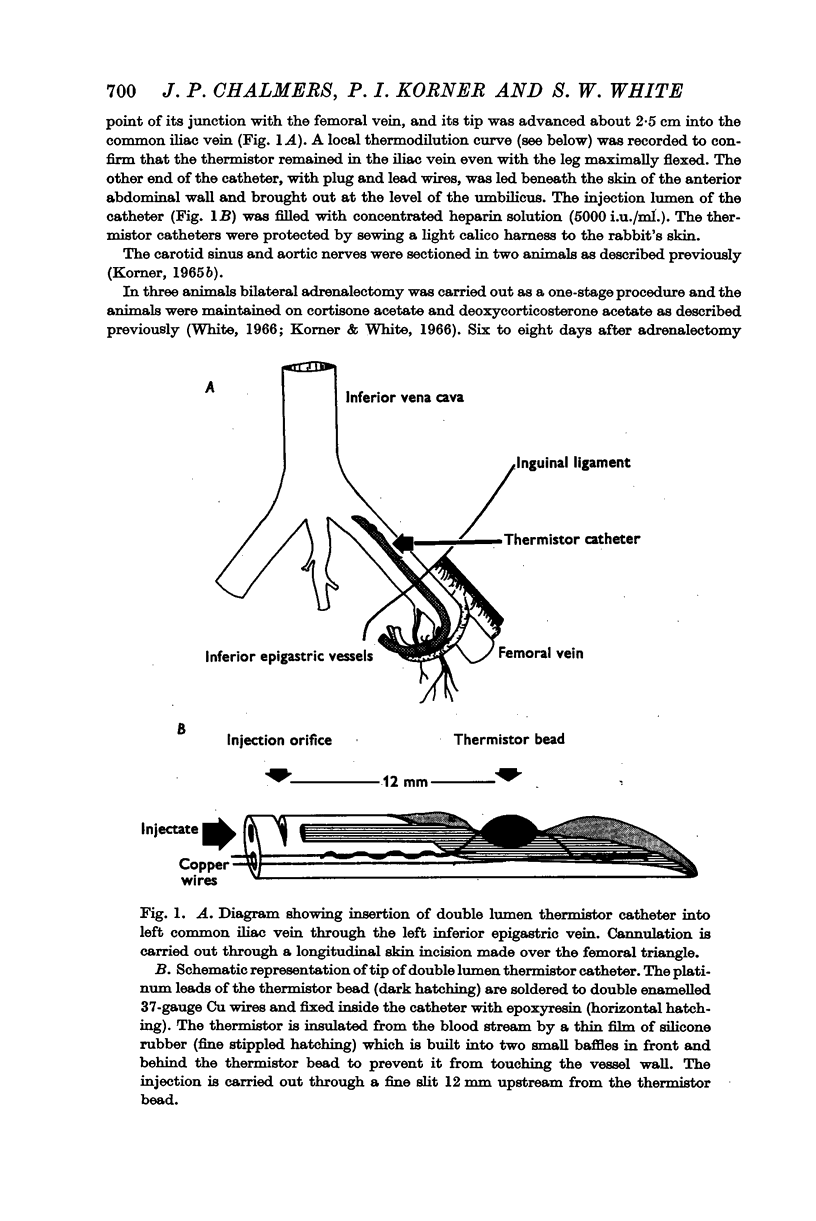
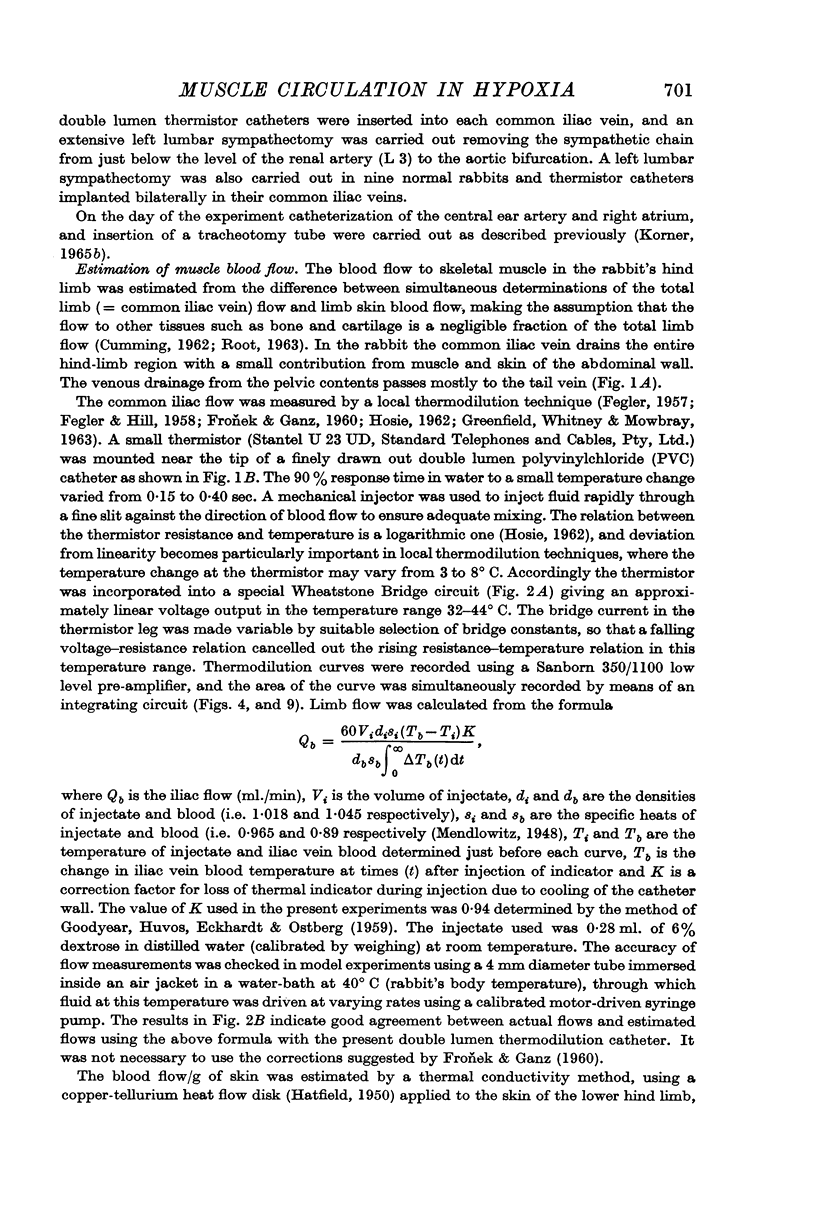
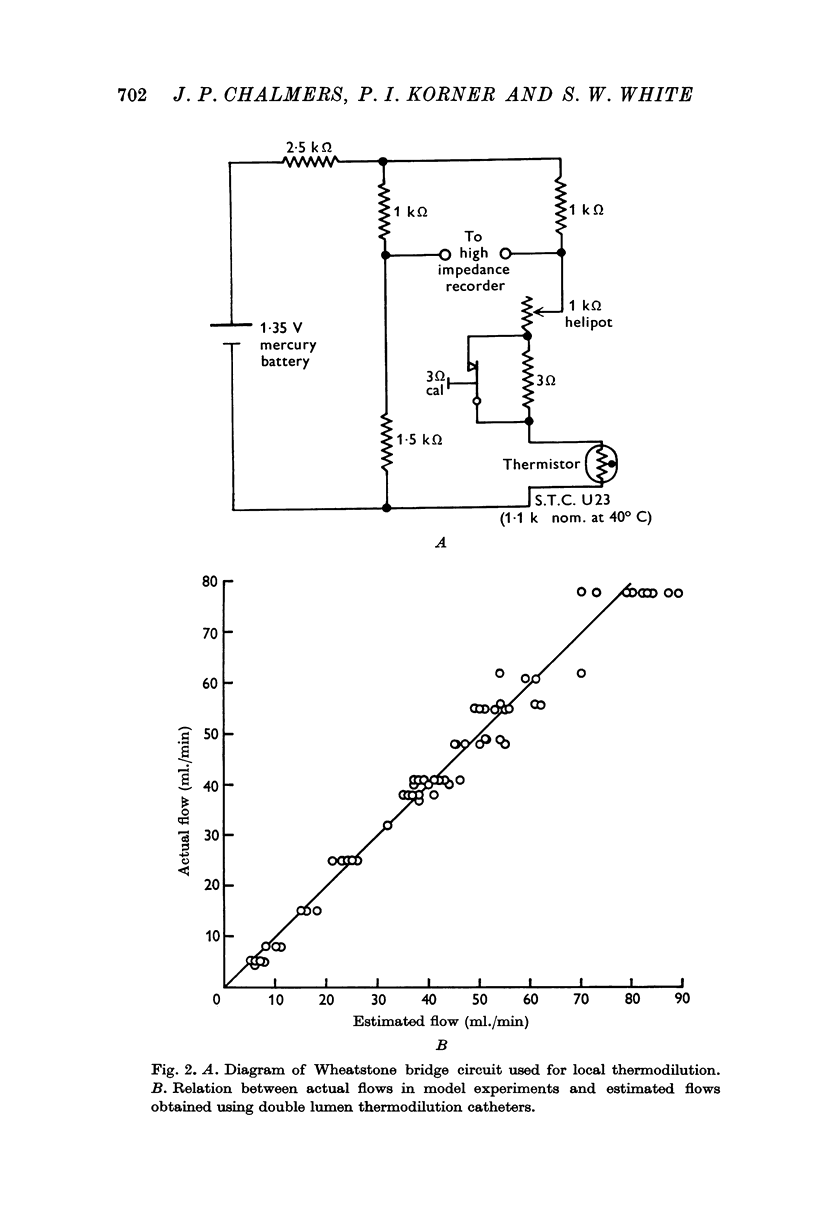
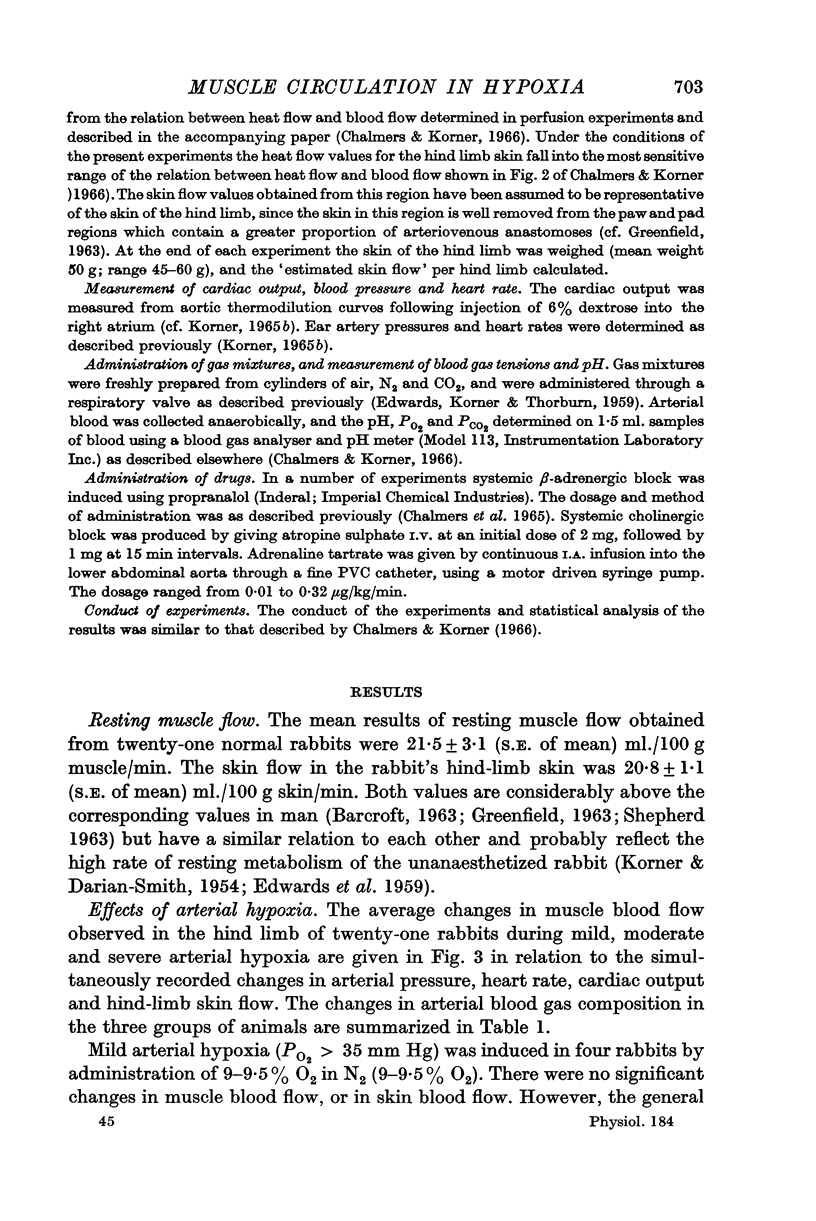
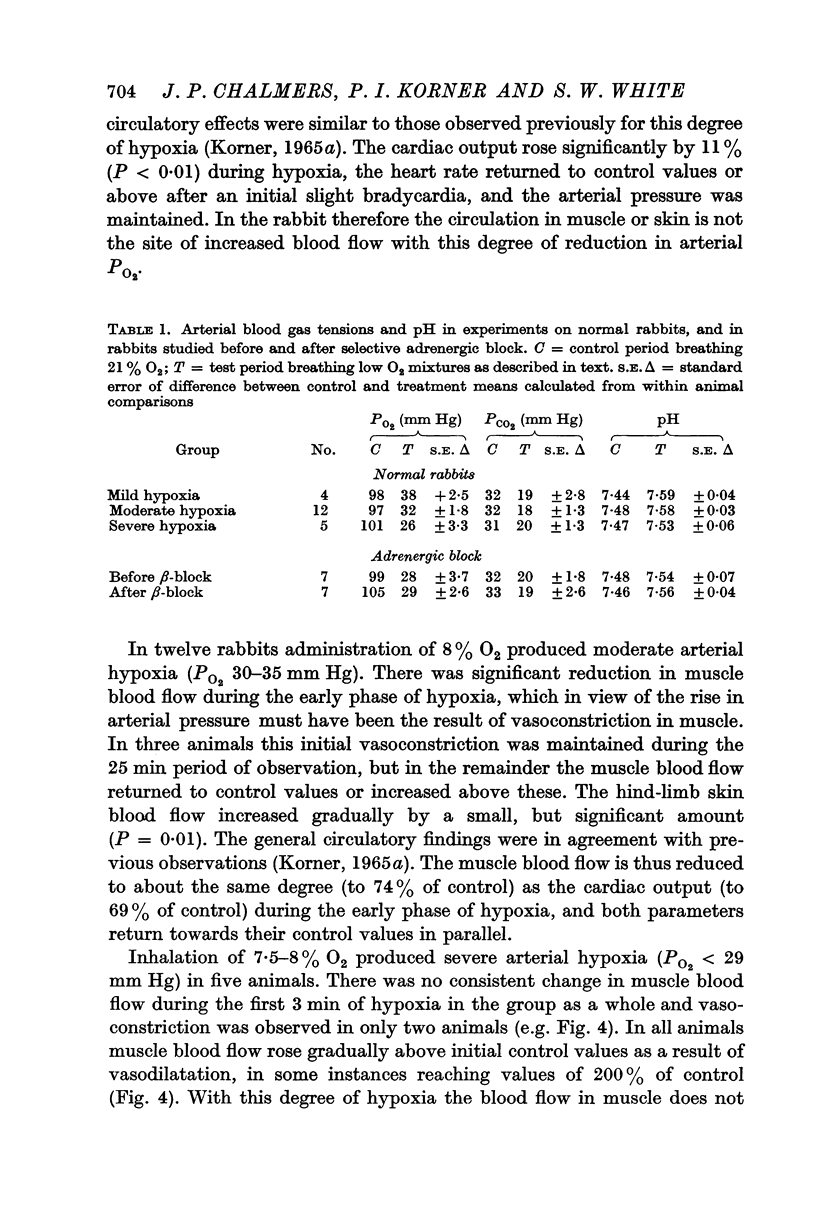
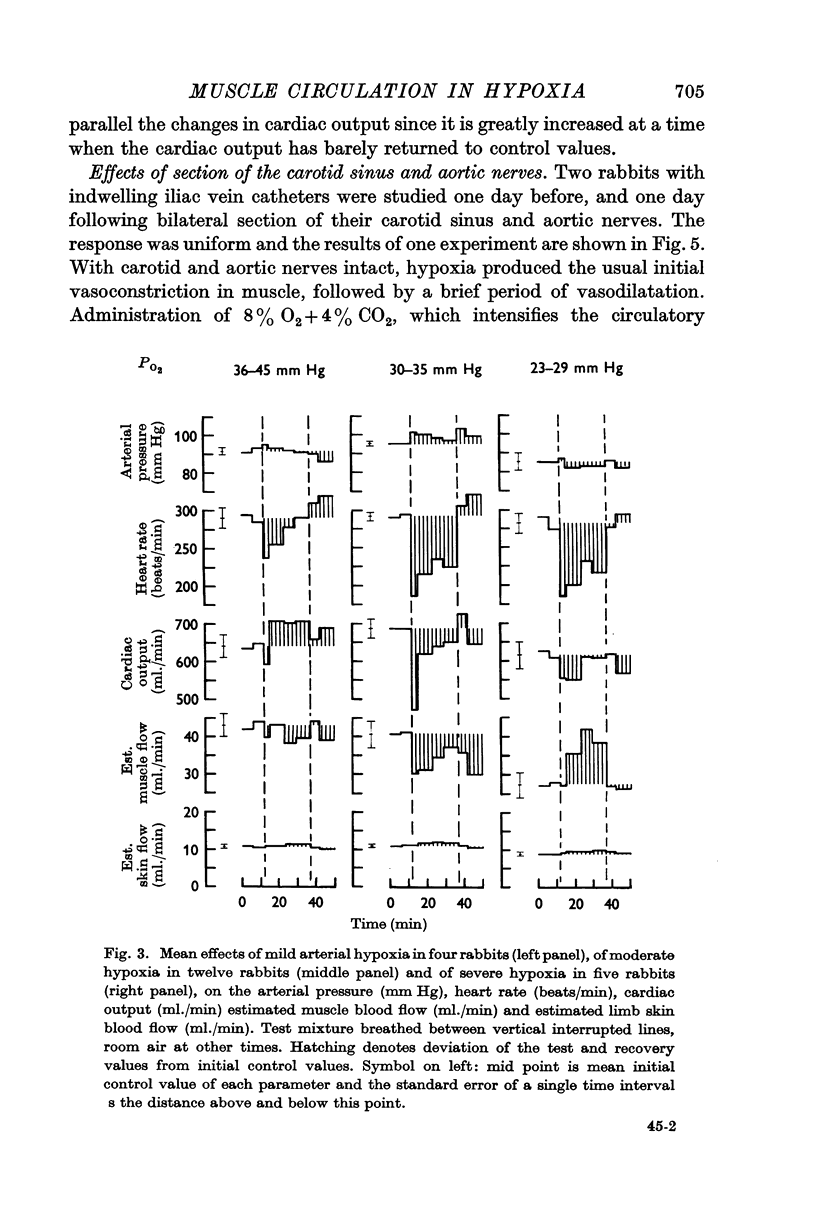
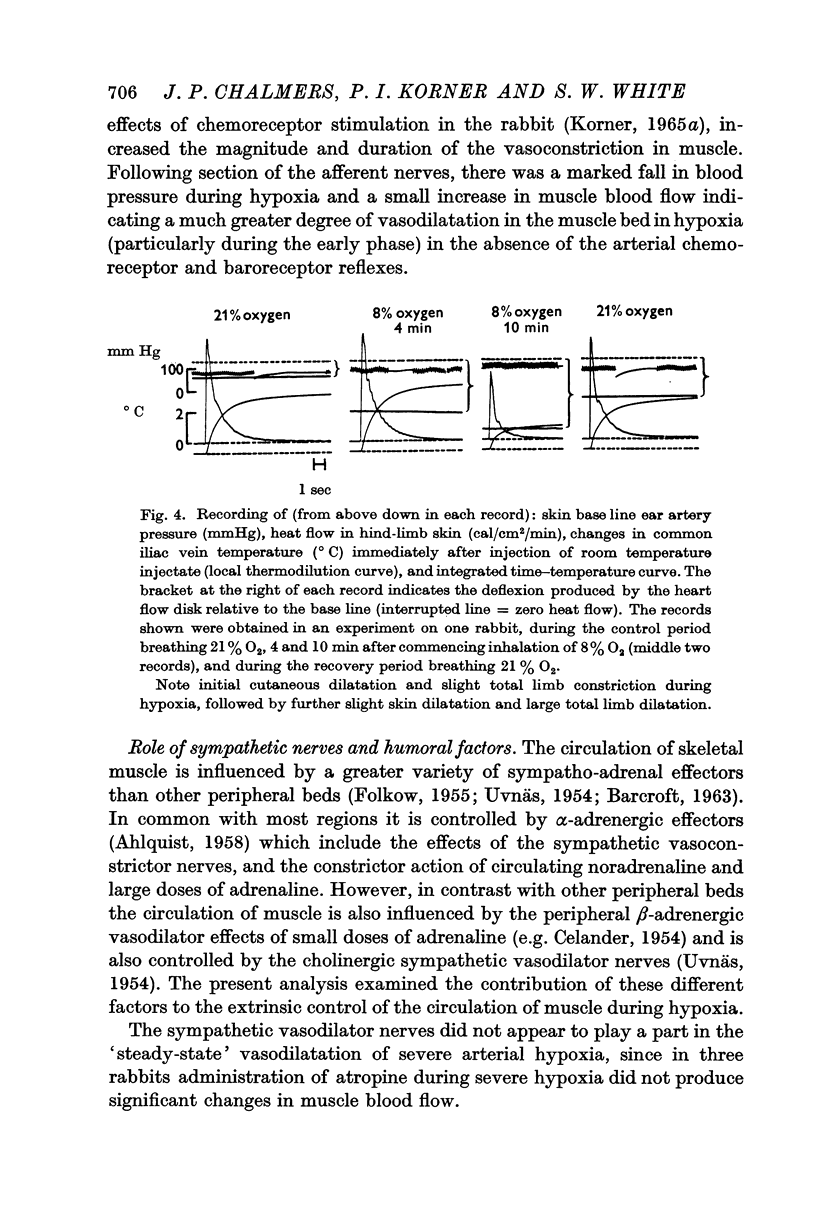
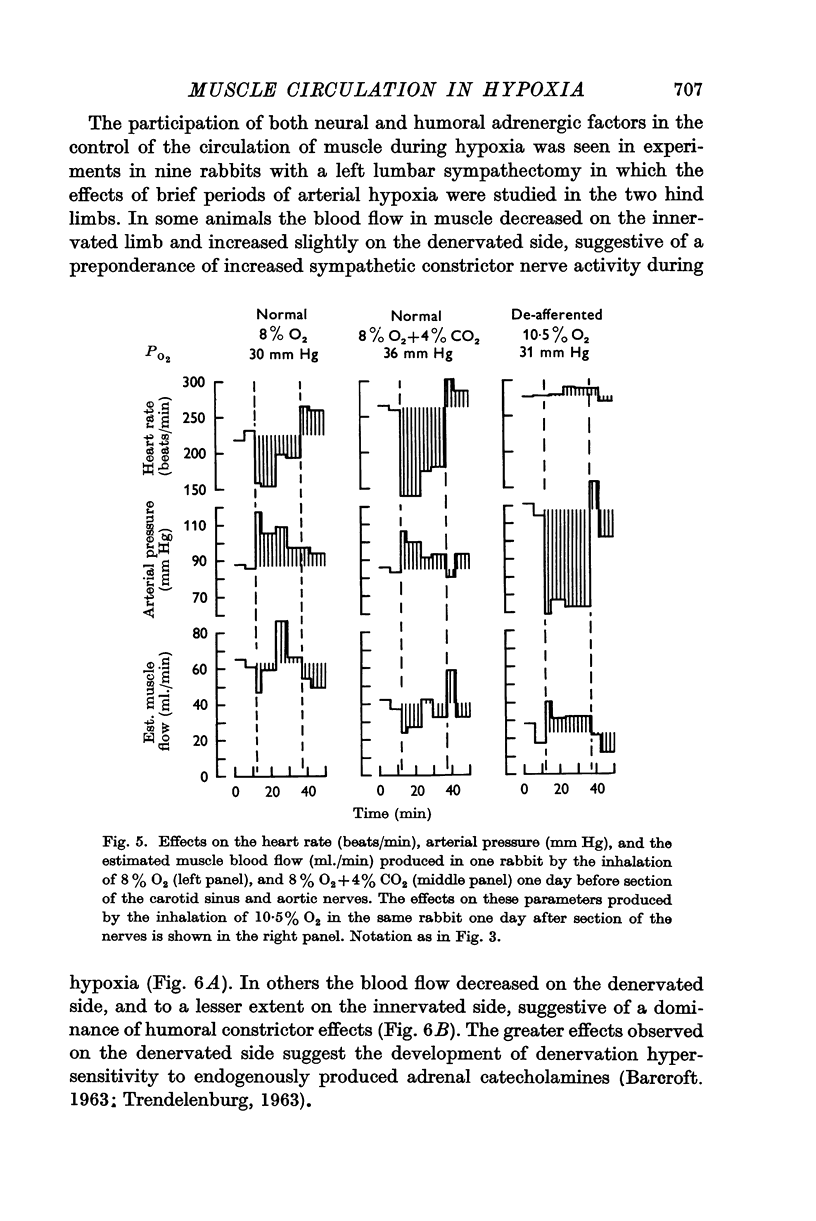
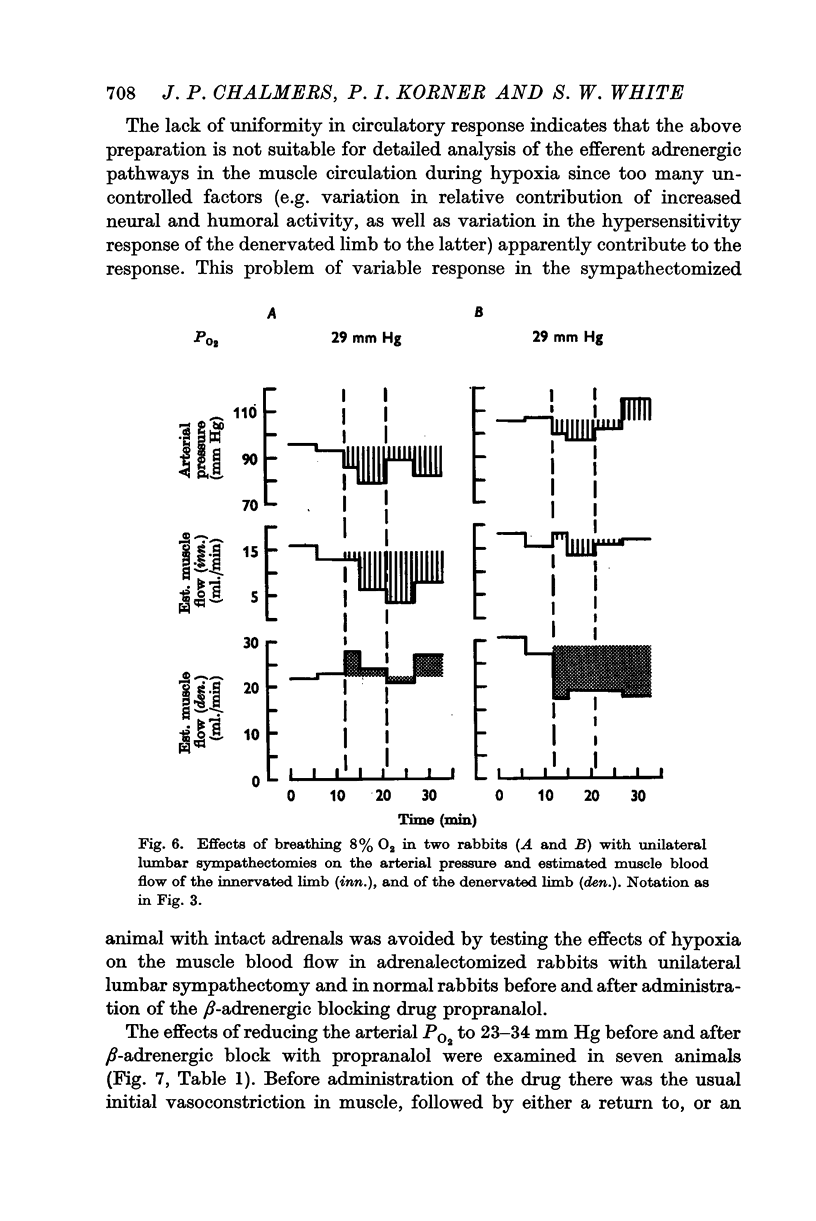
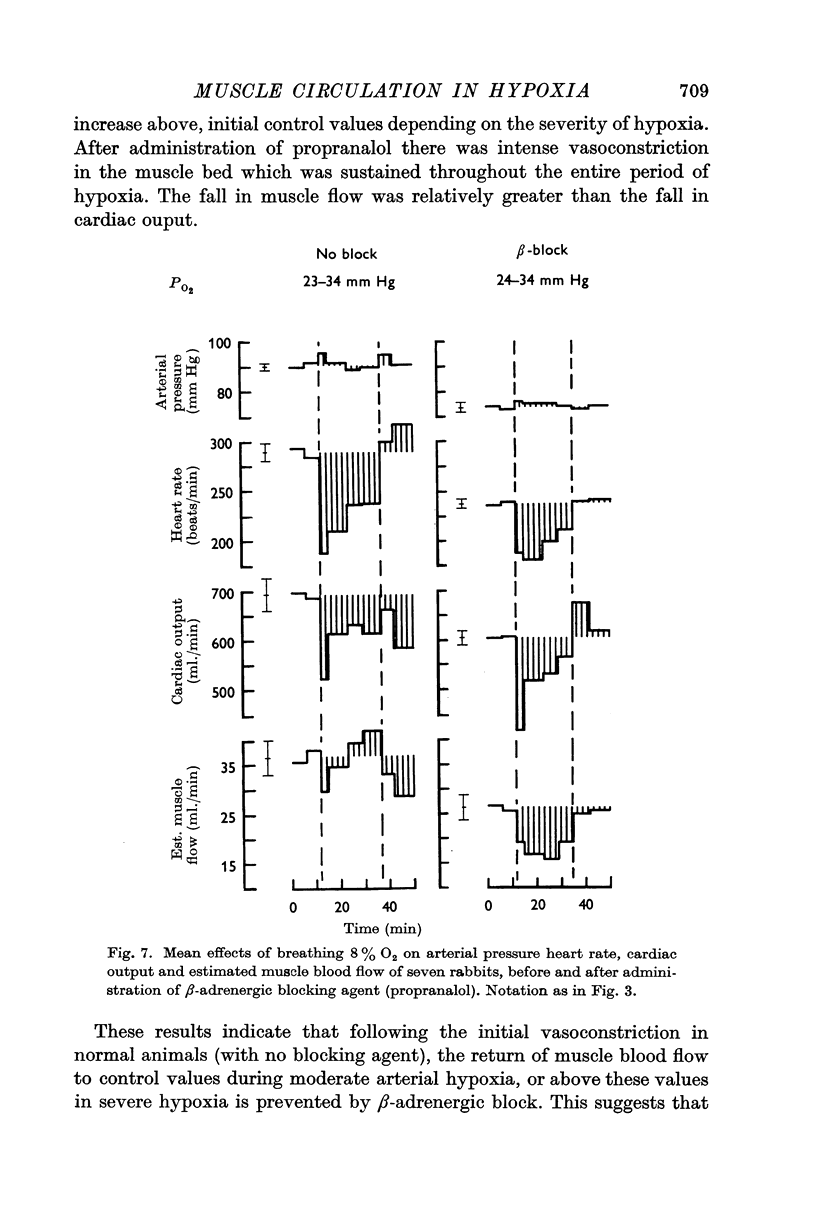
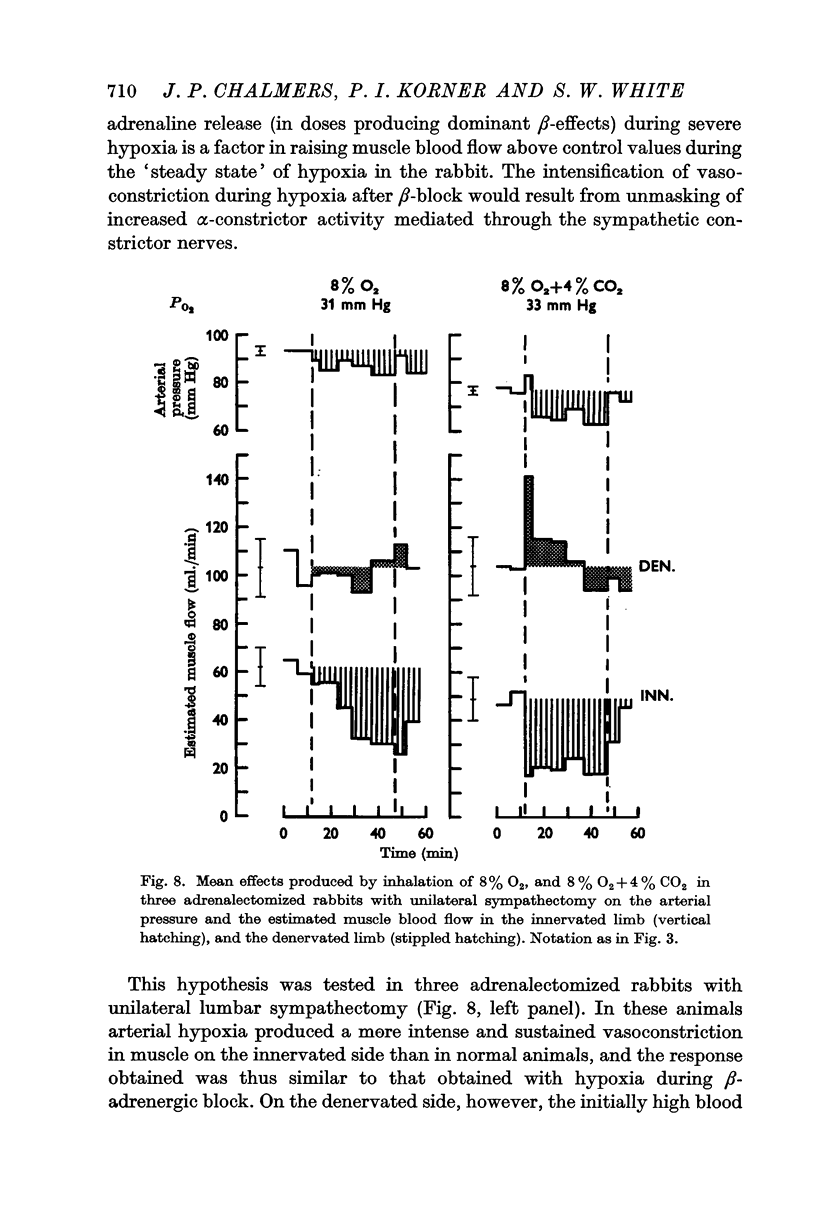
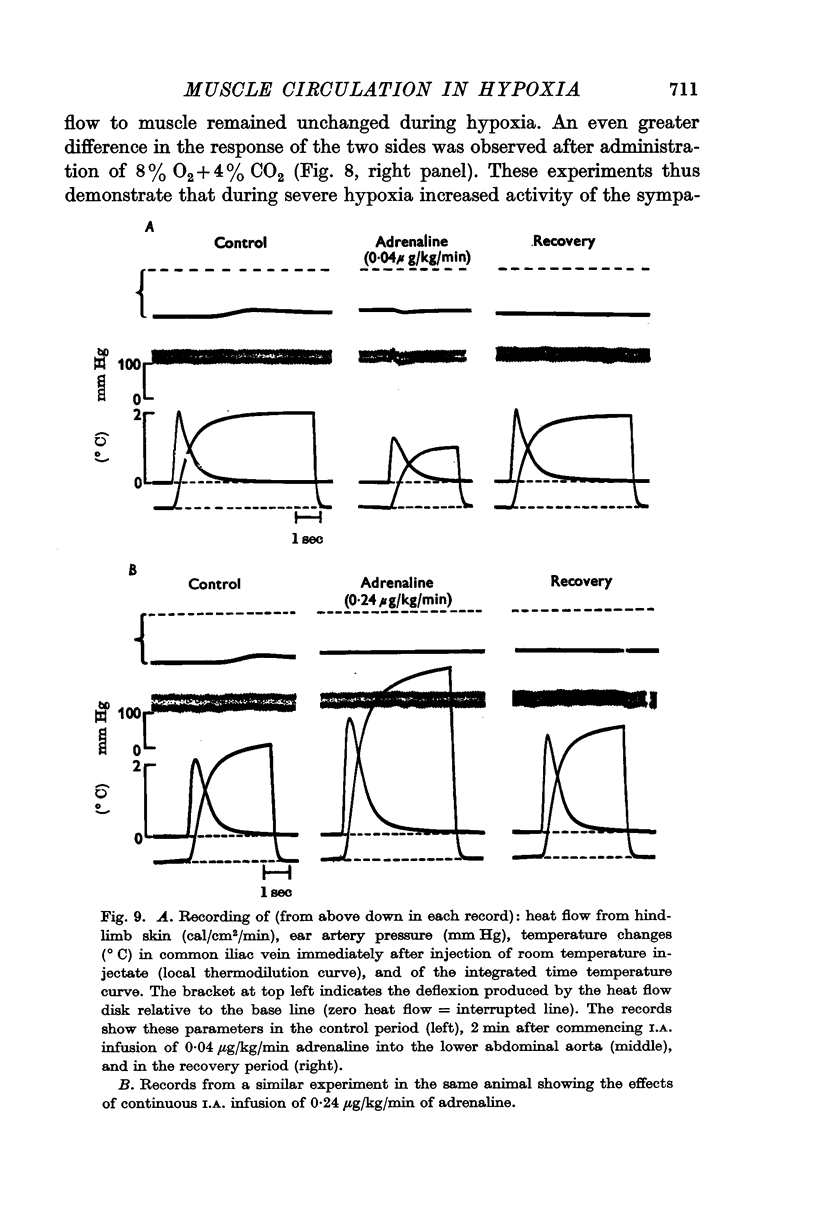
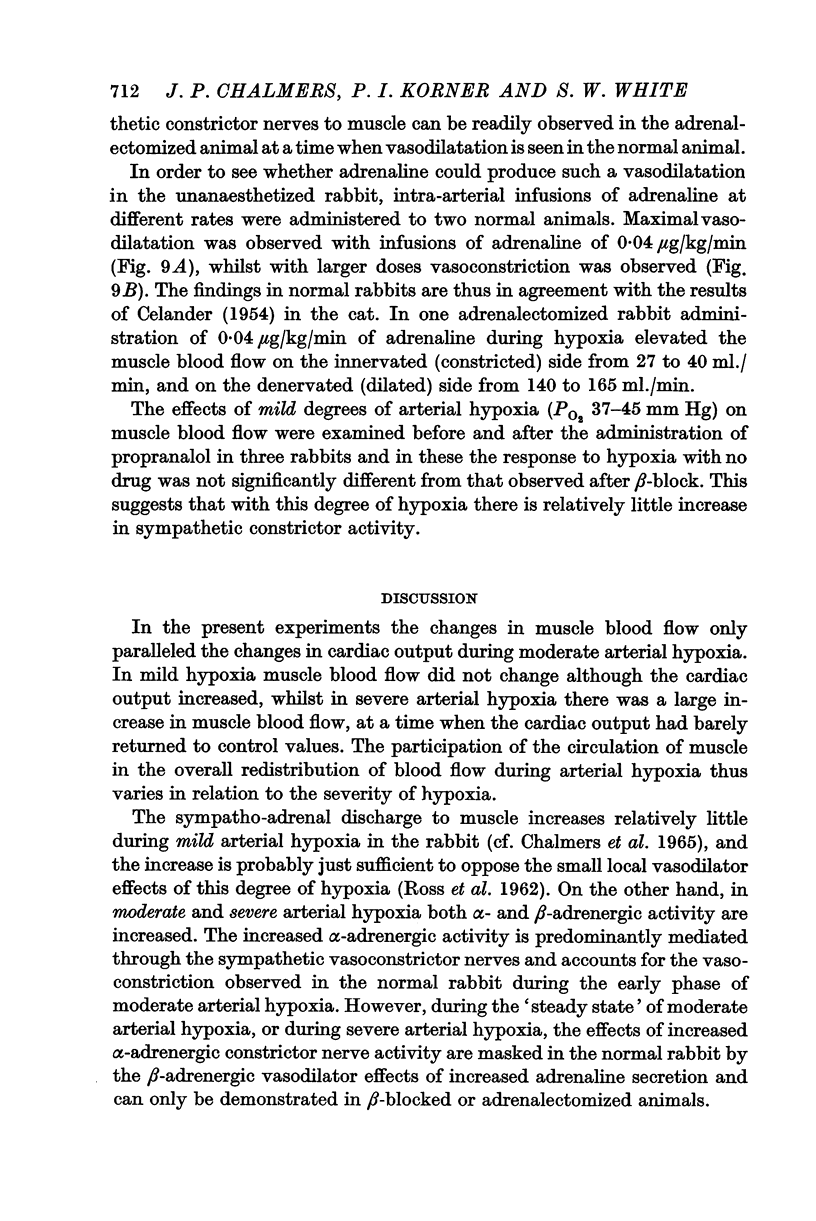
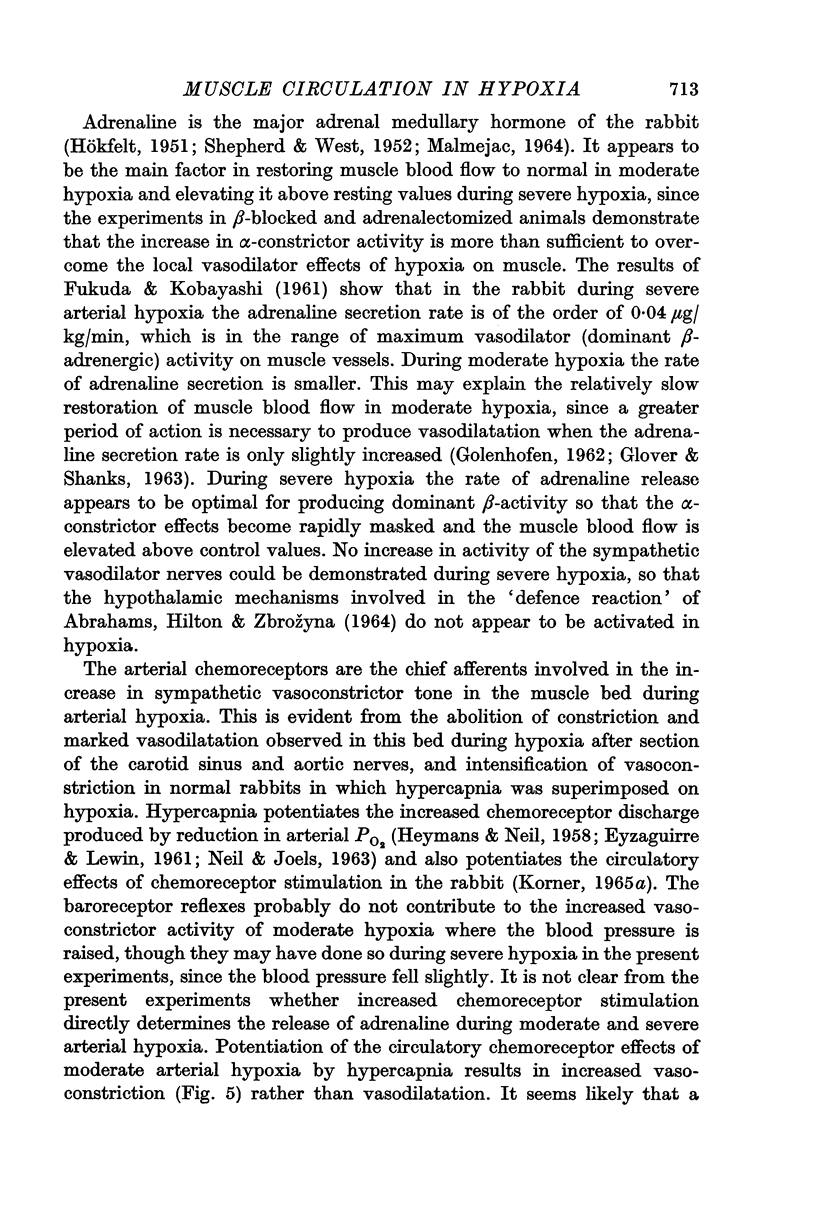
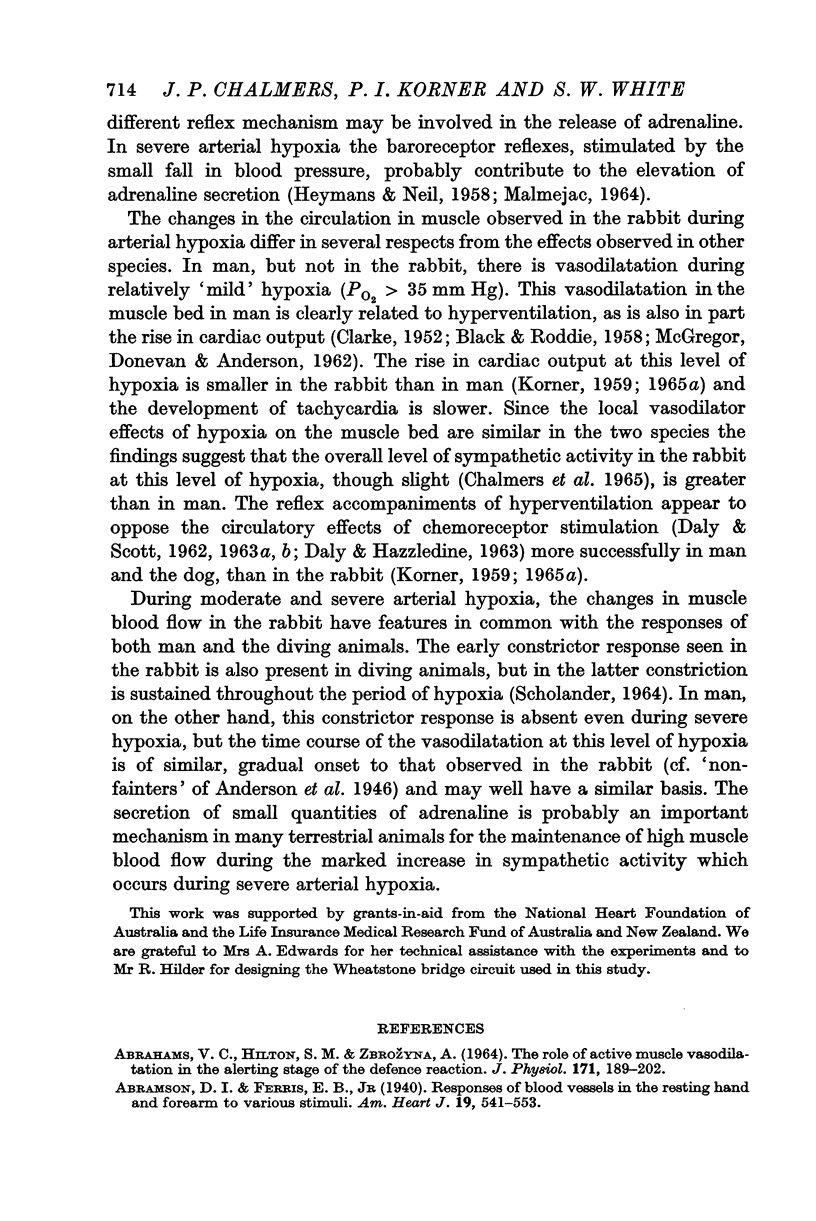
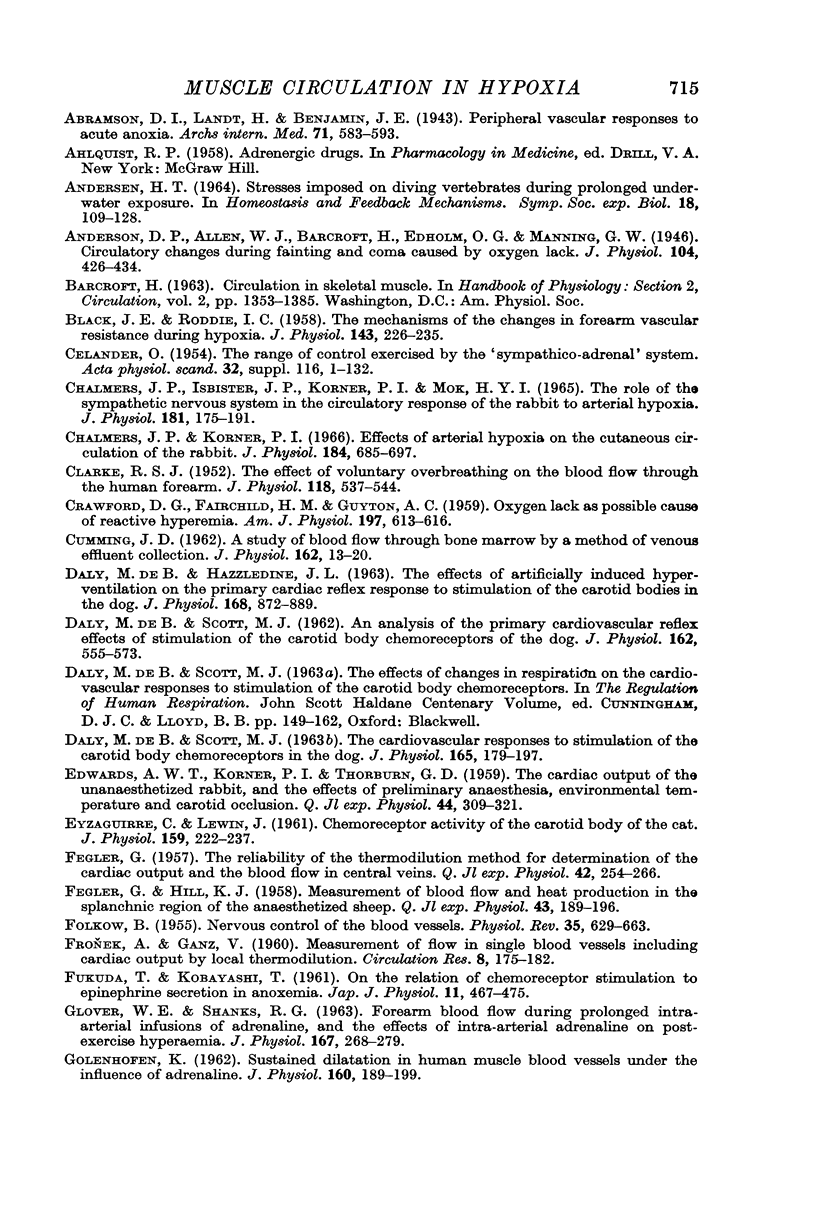
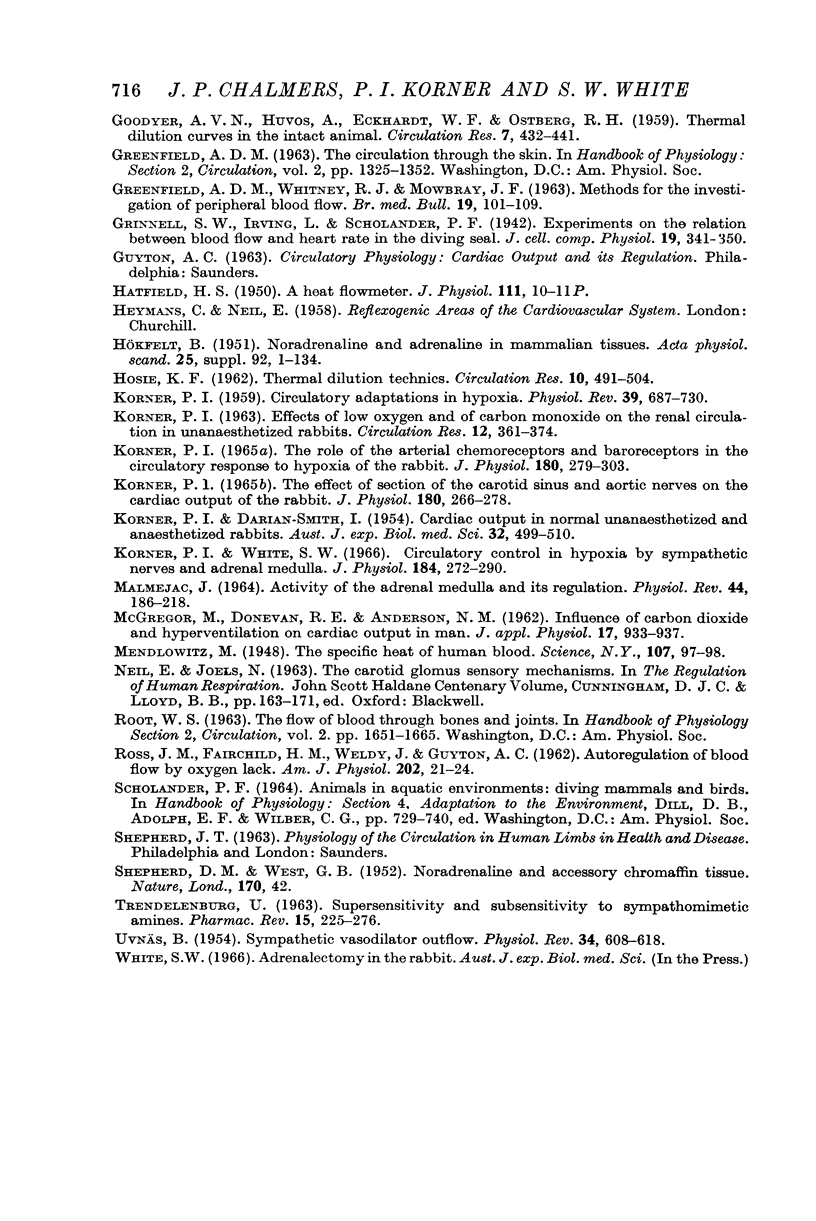
Selected References
These references are in PubMed. This may not be the complete list of references from this article.
- ABRAHAMS V. C., HILTON S. M. THE ROLE OF ACTIVE MUSCLE VASODILATATION IN THE ALERTING STAGE OF THE DEFENCE REACTION. J Physiol. 1964 Jun;171:189–202. doi: 10.1113/jphysiol.1964.sp007371. [DOI] [PMC free article] [PubMed] [Google Scholar]
- Andersen H. T. Stresses imposed on diving vertebrates during prolonged underwater exposure. Symp Soc Exp Biol. 1964;18:109–127. [PubMed] [Google Scholar]
- Anderson D. P., Allen W. J., Barcroft H., Edholm O. G., Manning G. W. Circulatory changes during fainting and coma caused by oxygen lack. J Physiol. 1946 Apr 15;104(4):426–434. [PMC free article] [PubMed] [Google Scholar]
- BLACK J. E., RODDIE I. C. The mechanism of the changes in forearm vascular resistance during hypoxia. J Physiol. 1958 Sep 23;143(2):226–235. doi: 10.1113/jphysiol.1958.sp006055. [DOI] [PMC free article] [PubMed] [Google Scholar]
- CELANDER O. The range of control exercised by the sympathico-adrenal system; a quantitative study on blood vessels and other smooth muscle effectors in the cat. Acta Physiol Scand Suppl. 1954;32(116):1–132. [PubMed] [Google Scholar]
- CLARKE R. S. J. The effect of voluntary overbreathing on the blood flow through the human forearm. J Physiol. 1952 Dec;118(4):537–544. doi: 10.1113/jphysiol.1952.sp004815. [DOI] [PMC free article] [PubMed] [Google Scholar]
- CRAWFORD D. G., FAIRCHILD H. M., GUYTON A. C. Oxygen lack as a possible cause of reactive hyperemia. Am J Physiol. 1959 Sep;197:613–616. doi: 10.1152/ajplegacy.1959.197.3.613. [DOI] [PubMed] [Google Scholar]
- CUMMING J. D. A study of blood flow through bone marrow by a method of venous effluent collection. J Physiol. 1962 Jun;162:13–20. doi: 10.1113/jphysiol.1962.sp006909. [DOI] [PMC free article] [PubMed] [Google Scholar]
- Chalmers J. P., Isbister J. P., Korner P. I., Mok H. Y. The role of the sympathetic nervous system in the circulatory response of the rabbit to arterial hypoxia. J Physiol. 1965 Nov;181(1):175–191. doi: 10.1113/jphysiol.1965.sp007753. [DOI] [PMC free article] [PubMed] [Google Scholar]
- Chalmers J. P., Korner P. I. Effects of arterial hypoxia on the cutaneous circulation of the rabbit. J Physiol. 1966 Jun;184(3):685–697. doi: 10.1113/jphysiol.1966.sp007941. [DOI] [PMC free article] [PubMed] [Google Scholar]
- DALY M. D., HAZZLEDINE J. L. THE EFFECTS OF ARTIFICIALLY INDUCED HYPERVENTILATION ON THE PRIMARY CARDIAC REFLEX RESPONSE TO STIMULATION OF THE CAROTID BODIES IN THE DOG. J Physiol. 1963 Oct;168:872–889. doi: 10.1113/jphysiol.1963.sp007228. [DOI] [PMC free article] [PubMed] [Google Scholar]
- DALY M. D., SCOTT M. J. The cardiovascular responses to stimulation of the carotid body chemoreceptors in the dog. J Physiol. 1963 Jan;165:179–197. doi: 10.1113/jphysiol.1963.sp007051. [DOI] [PMC free article] [PubMed] [Google Scholar]
- DE BURGH DALY M., SCOTT M. J. An analysis of the primary cardiovascular reflex effects of stimulation of the carotid body chemoreceptors in the dog. J Physiol. 1962 Aug;162:555–573. doi: 10.1113/jphysiol.1962.sp006950. [DOI] [PMC free article] [PubMed] [Google Scholar]
- EDWARDS A. W., KORNER P. I., THORBURN G. D. The cardiac output of the unanaesthetized rabbit, and the effects of preliminary anaesthesia, environmental temperature and carotid occlusion. Q J Exp Physiol Cogn Med Sci. 1959 Jul;44:309–321. doi: 10.1113/expphysiol.1959.sp001403. [DOI] [PubMed] [Google Scholar]
- EYZAGUIRRE C., LEWIN J. Chemoreceptor activity of the carotid body of the cat. J Physiol. 1961 Dec;159:222–237. doi: 10.1113/jphysiol.1961.sp006804. [DOI] [PMC free article] [PubMed] [Google Scholar]
- FEGLER G., HILL K. J. Measurement of blood flow and heat production in the splanchnic region of the anaesthetized sheep. Q J Exp Physiol Cogn Med Sci. 1958 Apr;43(2):189–196. doi: 10.1113/expphysiol.1958.sp001316. [DOI] [PubMed] [Google Scholar]
- FEGLER G. The reliability of the thermodilution method for determination of the cardiac output and the blood flow in central veins. Q J Exp Physiol Cogn Med Sci. 1957 Jul;42(3):254–266. doi: 10.1113/expphysiol.1957.sp001261. [DOI] [PubMed] [Google Scholar]
- FOLKOW B. Nervous control of the blood vessels. Physiol Rev. 1955 Jul;35(3):629–663. doi: 10.1152/physrev.1955.35.3.629. [DOI] [PubMed] [Google Scholar]
- FUKUDA T., KORAYASHI T. On the relation of chemoreceptor stimulation to epinephrine secretion in anoxemia. Jpn J Physiol. 1961 Oct 15;11:467–475. doi: 10.2170/jjphysiol.11.467. [DOI] [PubMed] [Google Scholar]
- GLOVER W. E., SHANKS R. G. Forearm blood flow during prolonged intra-arterial infusions of adrenaline, and the effects of intra-arterial adrenaline on post-exercise hyperaemia. J Physiol. 1963 Jul;167:268–279. doi: 10.1113/jphysiol.1963.sp007148. [DOI] [PMC free article] [PubMed] [Google Scholar]
- GOODYER A. V., HUVOS A., ECKHARDT W. F., OSTBERG R. H. Thermal dilution curves in the intact animal. Circ Res. 1959 May;7(3):432–441. doi: 10.1161/01.res.7.3.432. [DOI] [PubMed] [Google Scholar]
- GREENFIELD A. D., WHITNEY R. J., MOWBRAY J. F. Methods for the investigation of peripheral blood flow. Br Med Bull. 1963 May;19:101–109. doi: 10.1093/oxfordjournals.bmb.a070026. [DOI] [PubMed] [Google Scholar]
- Golenhofen K. Sustained dilatation in human muscle blood vessels under the influence of adrenaline. J Physiol. 1962 Feb;160(2):189–199. doi: 10.1113/jphysiol.1962.sp006840. [DOI] [PMC free article] [PubMed] [Google Scholar]
- HOSIE K. F. Thermal-dilution technics. Circ Res. 1962 Mar;10:491–504. doi: 10.1161/01.res.10.3.491. [DOI] [PubMed] [Google Scholar]
- KORNER P. I. Circulatory adaptations in hypoxia. Physiol Rev. 1959 Oct;39:687–730. doi: 10.1152/physrev.1959.39.4.687. [DOI] [PubMed] [Google Scholar]
- KORNER P. I. Effects of low oxygen and of carbon monoxide on the renal circulation in unanesthetized rabbits. Circ Res. 1963 Apr;12:361–374. doi: 10.1161/01.res.12.4.361. [DOI] [PubMed] [Google Scholar]
- KORNER P. I., SMITH I. D. Cardiac output in normal unanaesthetized and anaesthetized and anaesthetized rabbits. Aust J Exp Biol Med Sci. 1954 Aug;32(4):499–510. doi: 10.1038/icb.1954.52. [DOI] [PubMed] [Google Scholar]
- Korner P. I. The effect of section of the carotid sinus and aortic nerves on the cardiac output of the rabbit. J Physiol. 1965 Sep;180(2):266–278. doi: 10.1113/jphysiol.1965.sp007702. [DOI] [PMC free article] [PubMed] [Google Scholar]
- Korner P. I. The role of the arterial chemoreceptors and baroreceptors in the circulatory response to hypoxia of the rabbit. J Physiol. 1965 Sep;180(2):279–303. doi: 10.1113/jphysiol.1965.sp007703. [DOI] [PMC free article] [PubMed] [Google Scholar]
- Korner P. I., White S. W. Circulatory control in hypoxia by the sympathetic nerves and adrenal medulla. J Physiol. 1966 May;184(2):272–290. doi: 10.1113/jphysiol.1966.sp007915. [DOI] [PMC free article] [PubMed] [Google Scholar]
- MALMEJAC J. ACTIVITY OF THE ADRENAL MEDULLA AND ITS REGULATION. Physiol Rev. 1964 Apr;44:186–218. doi: 10.1152/physrev.1964.44.2.186. [DOI] [PubMed] [Google Scholar]
- Mendlowitz M. The Specific Heat of Human Blood. Science. 1948 Jan 23;107(2769):97–98. doi: 10.1126/science.107.2769.97. [DOI] [PubMed] [Google Scholar]
- ROSS J. M., FAIRCHILD H. M., WELDY J., GUYTON A. C. Autoregulation of blood flow by oxygen lack. Am J Physiol. 1962 Jan;202:21–24. doi: 10.1152/ajplegacy.1962.202.1.21. [DOI] [PubMed] [Google Scholar]
- SHEPHERD D. M., WEST G. B. Noradrenaline and accessory chromaffin tissue. Nature. 1952 Jul 5;170(4314):42–43. doi: 10.1038/170042b0. [DOI] [PubMed] [Google Scholar]
- TRENDELENBURG U. Supersensitivity and subsensitivity to sympathomimetic amines. Pharmacol Rev. 1963 Jun;15:225–276. [PubMed] [Google Scholar]
- UVNAS B. Sympathetic vasodilator outflow. Physiol Rev. 1954 Jul;34(3):608–618. doi: 10.1152/physrev.1954.34.3.608. [DOI] [PubMed] [Google Scholar]


